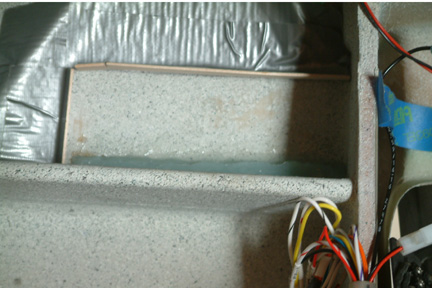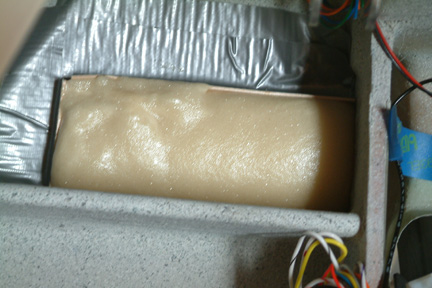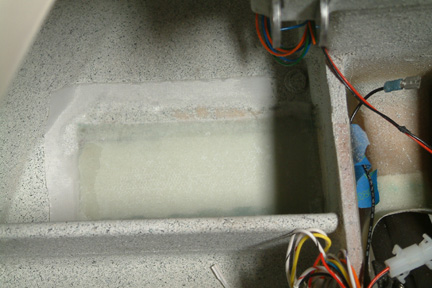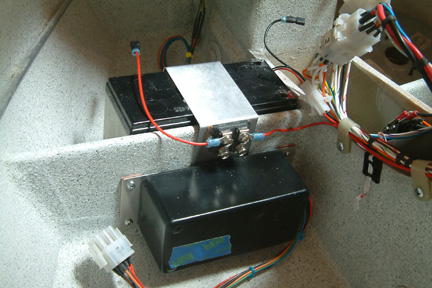



I purchased and installed the same battery most Cozy builders use (PC680) as my main battery. Installation of this battery is discussed in Section 1 of this chapter. Though I am installing the VPX Pro (Electronic Breaker System), and a 2nd alternator (B&C SD-8) that came with the engine, I was urged that I should have a auxiliary battery to prevent system blackouts during engine start. Reluctantly, I complied...One of the advantages of having an aux battery is that if your instrument(s) reboots during engine start, all the flight planning information (prior to engine start) could be lost. This may save some inconvenience down the road.
An aux battery to prevent radio reboot does not have to be a big one. Just enough to keep a couple crucial instrument to stay on during engine start should be adequate. I decided to use a 12V 7mh batteries for this purpose. They are inexpensive and are readily available for purchase.
Since the aux battery is rather small, I decided to mount it up front, in place of future ballasts - as I am around 145 pounds and expect to add quite a bit of ballast for appropriate weight and balance. The floor at the nose area is some what slanted and I prefer to mount the battery leveled. It required a few steps to make it so. The first step is to build up a small flox step and build up a fence the size of the aux battery as shown in picture #1 below (note the flox strip against the fence). Then I added pour foam into the fenced-in area (picture #2)After that, I sand down the foam and added 3 BID on the top - forming a flat step for the battery to sit on (picture #3). I build an aluminum bracket to secure the aux battery. The bracket is screwed down at the nose floor and the vertical fence (picture #4). The aux battery is forward of the vertical fence. The black box aft the vertical fence is the Auto Nose Gear Extension by Wilhemsen.
 |
 |
 |
 |
At this time the instruments that are tied to this aux battery are the GTN650 and the primary GRT EFIS (secondary power input). Operationally, I can switch on the aux battery anytime without turning on the main battery on. Once I have gather all flight information, I can switch on the master for the rest of the electronic systems. I also added a Sochtky diodes between the aux battery and the main battery to allow one way current flow from the main to the aux. When the main battery voltage drops during engine start, the aux battery will continue to provide current to keep both the GTN650 and primary EFIS on without reboot.